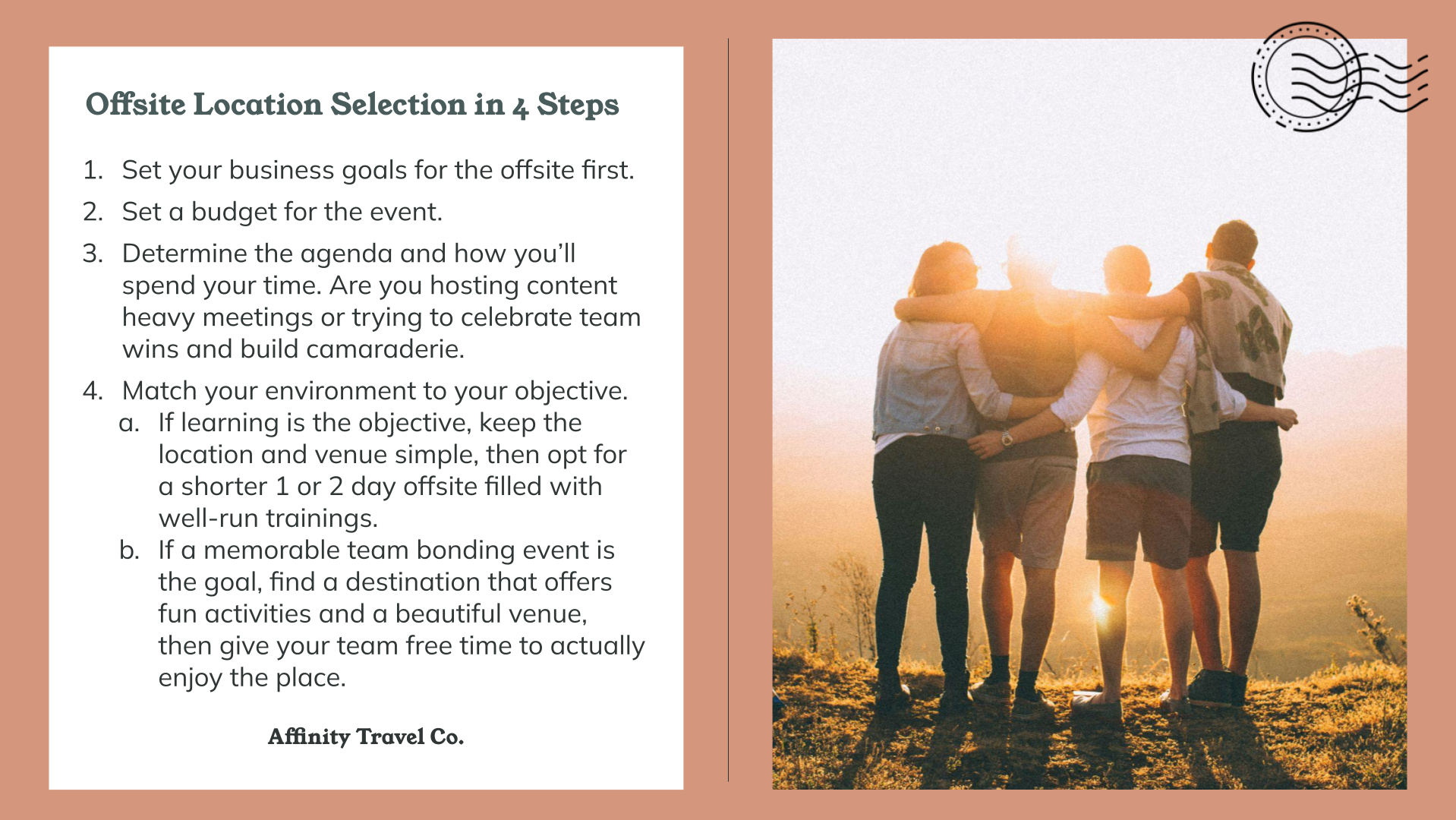Why Your Offsite Location Matters More Than You Think: A Strategic Guide to Environment Selection
The most expensive mistake in offsite planning isn't choosing the wrong luxury resort – it's choosing a luxury resort when you just need a conference room. After analyzing hundreds of corporate offsites across multiple industries, I've found that misalignment between location and purpose is the single biggest factor in offsite disappointment. Let me share two contrasting stories that illustrate this principle.
Consider a recent private equity executive retreat that brought 160 portfolio company leaders from around the world to a prestigious Arizona resort. The room rates exceeded $300 per night, and the property boasted world-class golf courses, stunning pools, and premium amenities. Yet participants spent each day from 9 AM to 4 PM in windowless conference rooms, with only a single evening at TopGolf for team building. Despite the significant investment in a premium location, many attendees left feeling they could have achieved the same results through virtual meetings – with one executive noting they'd sacrificed a week away from their company without experiencing anything truly memorable or unique.
Now contrast this with a European sales kickoff for an international cosmetics brand. With clear objectives of celebration and motivation, they chose Marrakech, Morocco – exotic yet accessible via direct flights from major European cities. The program balanced focused 3-hour morning sessions with afternoon cultural experiences and unique evening events throughout the city. They collaborated with local artisans for executive gifts and culminated in a desert dinner celebration. The location wasn't just a backdrop; it was integral to achieving their goals of resetting, connecting, and motivating their team.
The key insight? Different environments trigger distinct cognitive and social patterns. Here's how to align your location with common offsite objectives:
For Strategic Planning:
Look for environments that foster focus and clarity
Consider mountain settings where the landscape itself encourages "elevated" thinking
Ensure meeting spaces have natural light and views to prevent mental fatigue
For Innovation and Creativity:
Seek locations that break routine thinking patterns
Urban environments can stimulate new perspectives
Creative spaces like art galleries or design studios can inspire fresh thinking
For Team Building and Celebration:
Choose locations that facilitate natural interaction
Consider unique cultural settings that create shared experiences
Ensure the environment supports both structured and unstructured social time
For Training and Education:
Prioritize comfort and functionality over luxury
Consider proximity to your offices to maximize time and budget
Focus on spaces that support your learning methodology
Remember: A beautiful location is wasted if your schedule doesn't allow participants to engage with it. When planning your next offsite, start with your objectives, then ask:
Does this location actively support or potentially hinder our goals?
Will our schedule allow meaningful engagement with the environment?
Could we achieve the same results in a simpler setting?
Research from environmental psychology shows that different physical environments trigger distinct cognitive patterns. A beach resort might be great for creative brainstorming, but it's potentially disastrous for detailed financial planning. Mountain settings, with their natural constraints and clarity, tend to foster more focused strategic thinking. Urban environments, with their energy and complexity, often catalyze innovative problem-solving.
The most successful offsites aren't necessarily the most expensive – they're the ones where location and purpose align perfectly. Start with your objectives, then choose an environment that actively supports them. Your budget (and your team) will thank you.
If you want help planning an offsite, reach out to our CEO at katherine@womentravelabroad.com.
